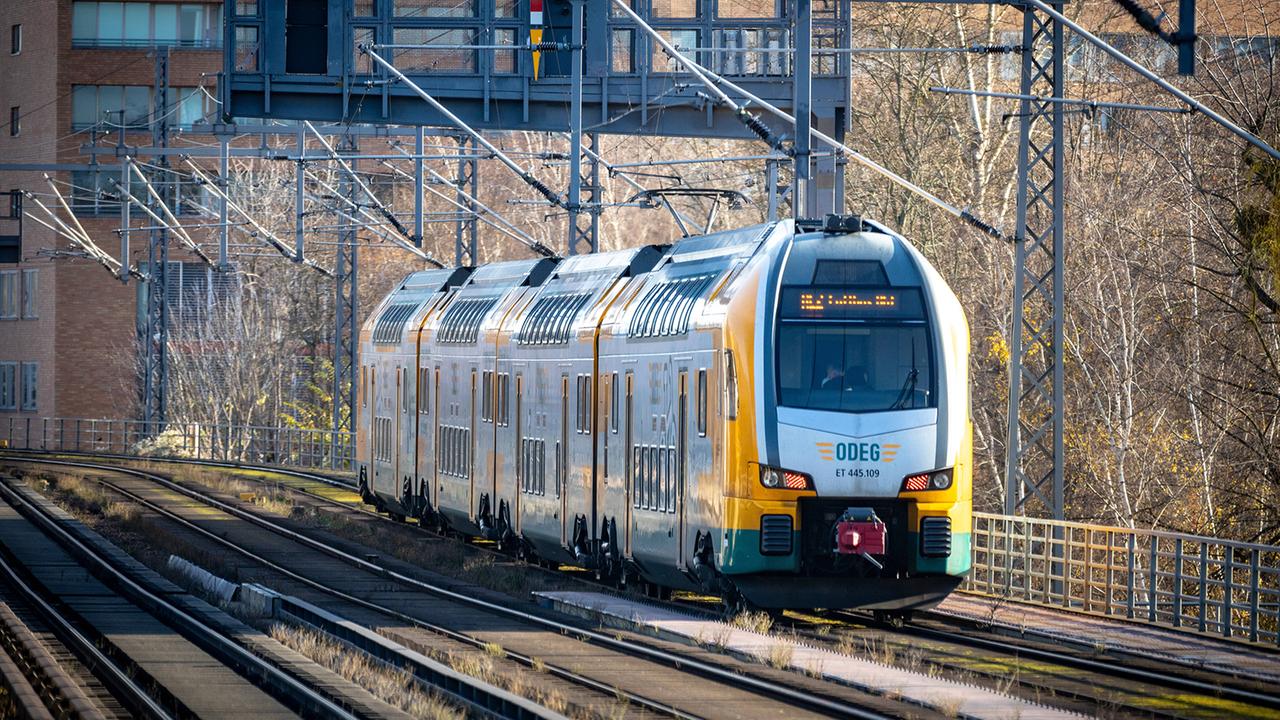The railway provider Netinera makes possible what Deutsche Bahn has previously refused to do: it reduces working hours in shift work with full wage compensation. Why is DB blocking itself in talks with the GDL union?
When the GDL’s warning strike almost completely paralyzed Deutsche Bahn traffic on December 8th, the trains of the rail company Netinera GmbH continued to run. They also had to struggle with delays, and trains were occasionally canceled because there were problems on the route operated by Deutsche Bahn. But for passengers, Netinera subsidiaries such as ODEG, metronom and erixx were much more predictable than their competitors from DB. They were not on strike because it was already clear on December 8th: Netinera wants to accommodate the GDL and is prepared to gradually reduce the working hours of its shift workers.
Working time becomes more family friendly
There has now been an agreement in collective bargaining between GDL and Netinera, and the signed collective agreement provides for a 35-hour week from 2028. It is also guaranteed that only five shifts will be worked per week – then two days off must follow.
For employees, this means that their working hours will be more health- and family-friendly. Working as a train driver or train attendant demands a lot from women and men. Working hours are extremely irregular, starting at 4 a.m. or lasting until late at night, and there are often only single days off instead of a weekend. This makes the job less attractive for young people, even though it doesn’t pay that badly.
But skilled workers are lacking in railway companies, as is the case everywhere in the German economy. The skilled workers market is correspondingly competitive, and the issue of work-life balance is at the top of the list of demands for young people. The calculation of the GDL – and now also of Netinera: The 35-hour week could be an argument to make a job at a railway company attractive to young people. This is initially expensive for the company, but in the end it is more economical than losing orders because there are not enough staff, says Netinera.
Deutsche Bahn does not want to negotiate about this
Deutsche Bahn calculates differently. She is also suffering from a lack of staff and is already having problems filling all shifts. In addition, tens of thousands will retire in the next five to ten years. If those who remain work even less, the shortage will become even greater, says Martin Seiler, DB Human Resources Director. Deutsche Bahn would need an additional ten percent more people just for this. This could neither be organized nor financed.
Private railways like Netinera only operate regionally and are also significantly smaller than Deutsche Bahn. What works for them at the moment is simply not possible for a large corporation. A reduction in working hours with wage compensation is not realistic and is therefore not being negotiated.
Deutsche Bahn also points out that there is already the possibility of individually reducing weekly working hours. Up to 35 hours are possible – but without wage compensation. However, only very few employees would take advantage of this offer. There is obviously no need, concludes Seiler.
Is the job not attractive enough for young people?
The GDL vehemently contradicts this. Even if, for example, experienced train drivers earn between 44,000 and 53,000 euros gross per year, very few could do without the money that a reduction in working hours would entail. Nevertheless, the vast majority would like to work less because they are overstrained by irregular working hours, long shifts and the often inability to plan their work. Sickness rates are high because stress weakens resistance.
In addition, the profession is not attractive for young people. And that’s a shame, because many young people could still imagine driving a locomotive or accompanying a train.
That’s why the GDL insists on discussions about the 35-hour week – including in the tariff dispute with Deutsche Bahn. The argument that the demand is unrealistic does not apply. The personnel shortage is already there, and management is obviously not able to recruit enough new employees. It is necessary to take new paths instead of remaining in old positions.
Economists are skeptical about the 35-hour week
Economists only partially agree with this. New ways of recruiting personnel are urgently needed, and the GDL is right. But experts confirm that the railway cannot currently afford a 35-hour week with full wage compensation. In order for it not to become too expensive, reductions in working hours should actually always be accompanied by increases in productivity, and that is not possible for train drivers or train attendants, they say. “Since rail transport is naturally about covering certain times, it is difficult to understand how shorter working hours could make this more efficient,” says Enzo Weber from the Institute for Labor Market and Occupational Research in Nuremberg, for example.
However, he believes that making working hours more flexible is a good and important strategy for being attractive as an employer. Employees should be offered the opportunity to plan their shifts depending on their personal needs. Short-term in weekly working hours or long-term over years and depending on your life situation.
“Always in the negative headlines”
Martin Klaffke, professor at the Berlin University of Applied Sciences, sees it the same way. He adds that recruiting new employees is often not just about money. Much more important is an atmosphere of motivation and appreciation in the company that gives employees the feeling that their work is important.
Alexander Eisenkopf from the Zeppelin University Friedrichshafen also argues in the same direction. The railway is partly to blame for the precarious personnel situation: “Who wants to work for a company that is constantly in the negative headlines and, for example, be exposed to customer frustration every day as a train attendant or at the service points?” The railway needs to work on its image in order to be attractive as an employer. You simply have to offer better quality so that employees can be proud of their workplace.
The 35-hour week alone cannot solve this problem. And the hardships of shift work cannot be explained away. Klaffke recommends that the railway should not only rely on the very young when recruiting staff, as night shifts and weekend shifts are still a deterrent at the moment – but rather target people who are dissatisfied in other industries. Or recruit women as employees after family leave. Retraining and further training are more promising from the company’s perspective. For existing employees, on the other hand, it is certainly a good thing to have to work less. However, the employer must also be able to afford this.





